Hellpoint Review – Sci-Fi Soulslike With Some Demons

Developed by Cradle Games
Published by Tiny Build
Available on PC (Reviewed), PS4, and Xbox One
MSRP $35
I do not envy the modern Soulslike developer. On the one hand, Soulslikes are one of the most popular styles of games on the market. The ARPG genre as a whole has been so undeniably altered by the shockwave of Dark Souls that every game now has some form of stamina management combat and enemies that respawn at checkpoints. On the other hand, newer Soulslike titles have inherited the expectations of a franchise that’s been around for 10 years. The millstone of time has since worn down your most worrisome niggles about the horrible camera in Dark Souls or the absurd backstab windows in Demon’s Souls. On top of that, 5 titles of improvement have elevated expectations even beyond the lofty heights of nostalgia. FromSoftware has had a lot of experience perfecting the formula. Experience that perhaps someday Hellpoint‘s developer Cradle Games will also have. Unfortunately, they still have a long road to travel.
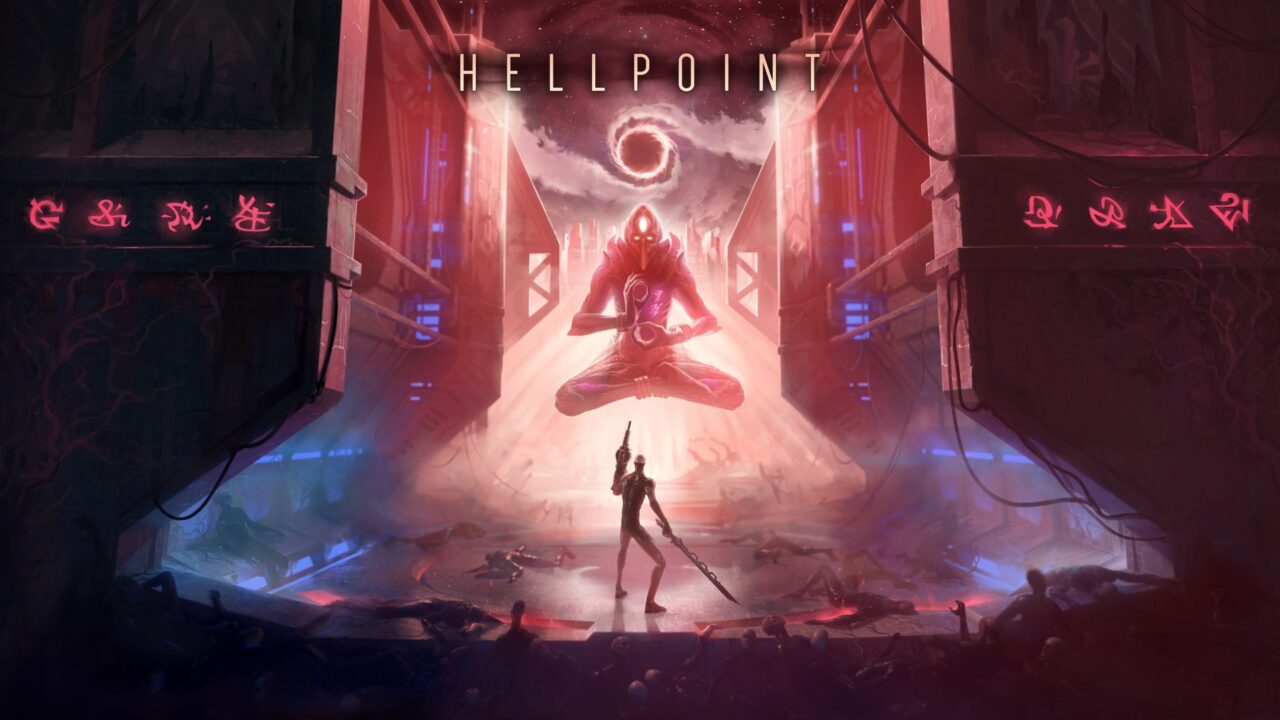
Reviewing Soulslikes is always a bit of a drag, since it essentially boils down to using Dark Souls as a baseline and just pointing out the things the game does better and worse. It’s a standard of judgement that I’ve grown increasingly disenfranchised with as games inch away from the genre’s source material. But with Hellpoint, the comparison is impossible to avoid. Hellpoint is sci-fi Dark Souls in space. You’ve got your sword, your board, and plenty of other weapons and gadgets that range from wildly overpowered to completely useless. You spend stamina to attack/block/dodge, and Axions to level up. The biggest difference comes from a dedicated jump button that can be used to solve puzzles, hunt for clues, and execute powerful jump attacks. Aside from that, it’s all Dark Souls stuff. Luckily, that also makes it pretty easy to break down what Hellpoint does right and what it does wrong. Soulslike games need to have four things: levels that reward exploration, tight tough combat, big scary bosses, and the sense of being a small adventurer in a much larger lonely world. While Hellpoint delivers on some of these stronger than others, a number of baffling design decisions hold the game back.
The premise of Hellpoint should be enough to entice any hardcore horror fan. In the depths of space and under the shadow of a swirling black hole, the derelict space station Irid Novo has become a prison of horrors. The laws of space and time have been torn asunder, leaving the once-thriving colony filled with nightmarish demons and tortured madmen. You play as a newly spawned drone tasked by a mysterious entity called “The Author” to explore the station and find out what happened. Hopefully, you can unravel the mystery and help humanity from making the same mistake again.
That quest to explore the station and uncover the truth is more than just the narrative framework. It’s the core of Hellpoint. Throughout the game a little information meter appears on the upper right of your screen right below your current Axion (experience points). Every time you discover a new clue, open a portal, defeat a new enemy for the first time, and several other milestones, the information counter ticks up. The goal is to reach 100% information and return to the Author. Along the way you’ll meet new NPCs and uncover information that cast doubt on your creator, but that core motivation of discovery never changes.
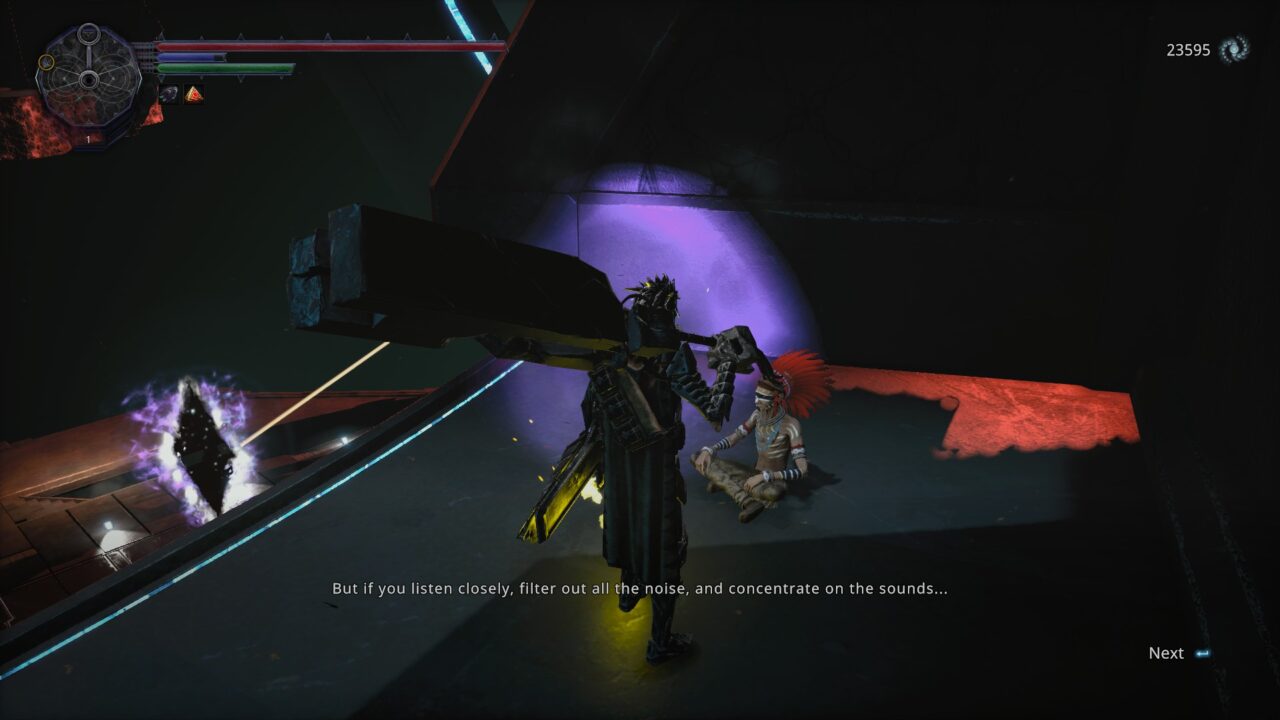
There’s a shit load of stuff in Hellpoint to discover. This is where the game comes closest to matching the greatness of Dark Souls. The game is way bigger than you’d expect from a budget Soulslike. There are a dozen or so zones that all intersect, allowing for varied runs. Each zone also comes with a trove of secrets to uncover. Uncovering these secrets is the real meat of Hellpoint. I’d estimate a good 50% of the game’s content is secrets. Which is fantastic. My favorite part of Soulslikes is pouring over every last nook and cranny looking for secrets. And the sheer variety of secrets in Hellpoint is impressive. It’s got jumping puzzles, secret walls, secret walls within secret walls, secret bridges, codes you have to write down to unlock even more secrets, etc. Some of these are significantly easier to suss out. Secret doors will always be in a certain configuration. On the flip side, you can easily go through several playthroughs without realizing that the special purple flashlight makes invisible bridges materialize. I discovered that one on accident. I’m confident in my sleuthing skills, and I’d estimate I missed at least a third of what there is hidden in the corners of Hellpoint.
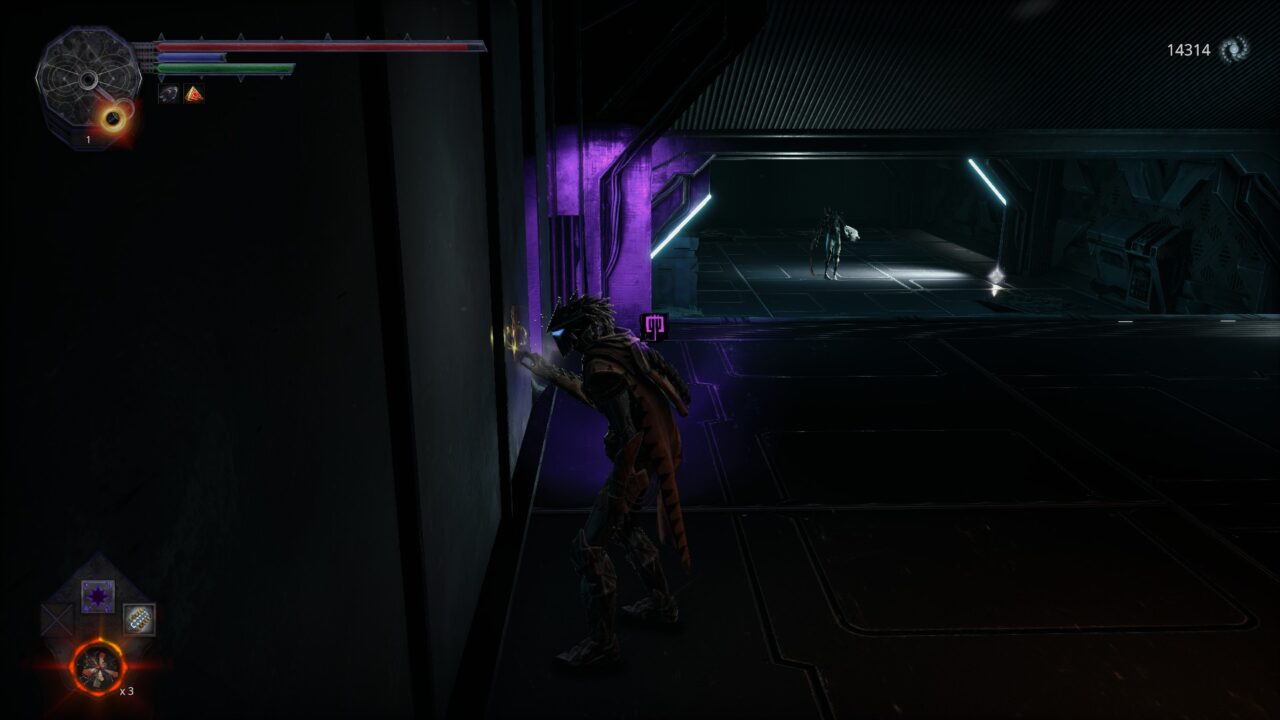
Finding these secrets and seeing how it all connects had me giddy as a teen figuring out where his parents hide the good booze. Unfortunately, a lot of this exploration is marred by finicky controls. There is an inconsistency in the way jumps will launch and land. Sometimes you can do a full sprint jump with barely any leadup. Other times your character will do this weird saunter for a few steps before limply hopping straight into the jaws of death below. I know that it sounds idiotic to complain about the jumping in a Soulslike game, but so much of Hellpoint is built around the terrible platforming. One particularly egregious puzzle required me to leap to specially marked stones The Last Crusade style. I lost more hours of my life than I care to admit before just randomly succeeding when my character somehow rolled from the half-court line to the endzone. It’s really unfortunate that the game gives you so much to see and such inefficient tools to see it with.
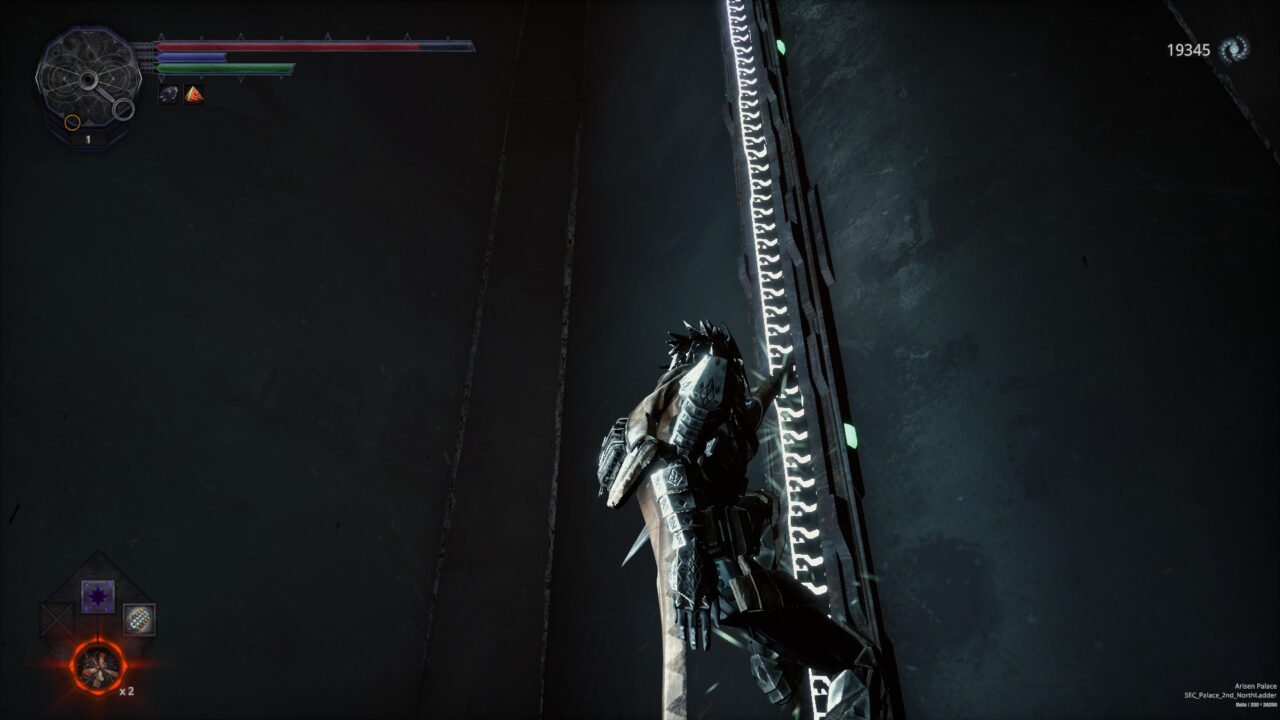
For the rest of Hellpoint, it’s shortcomings outweigh the positives. Some of this was due to the budget. The most obvious example is that over half of the bosses are just slightly bigger versions of regular enemies. They will have a couple more attacks than their standard counterparts, but they also tend to only have marginally more resistance to staggering. I got through most bosses in the game by just thwacking away and never learning their attack pattern. Not that any of the game’s 20 or so enemies really make you learn their patterns. There’s an overall lack of weight to the combat that makes it feel like you and the enemy are swiping at the vague notion of each other while health bars go down. There also aren’t nearly enough weapons in the game to accommodate certain builds. The highest strength weapon that I found capped out at 18, which isn’t nearly enough to reward players for heavily investing in specific stats.
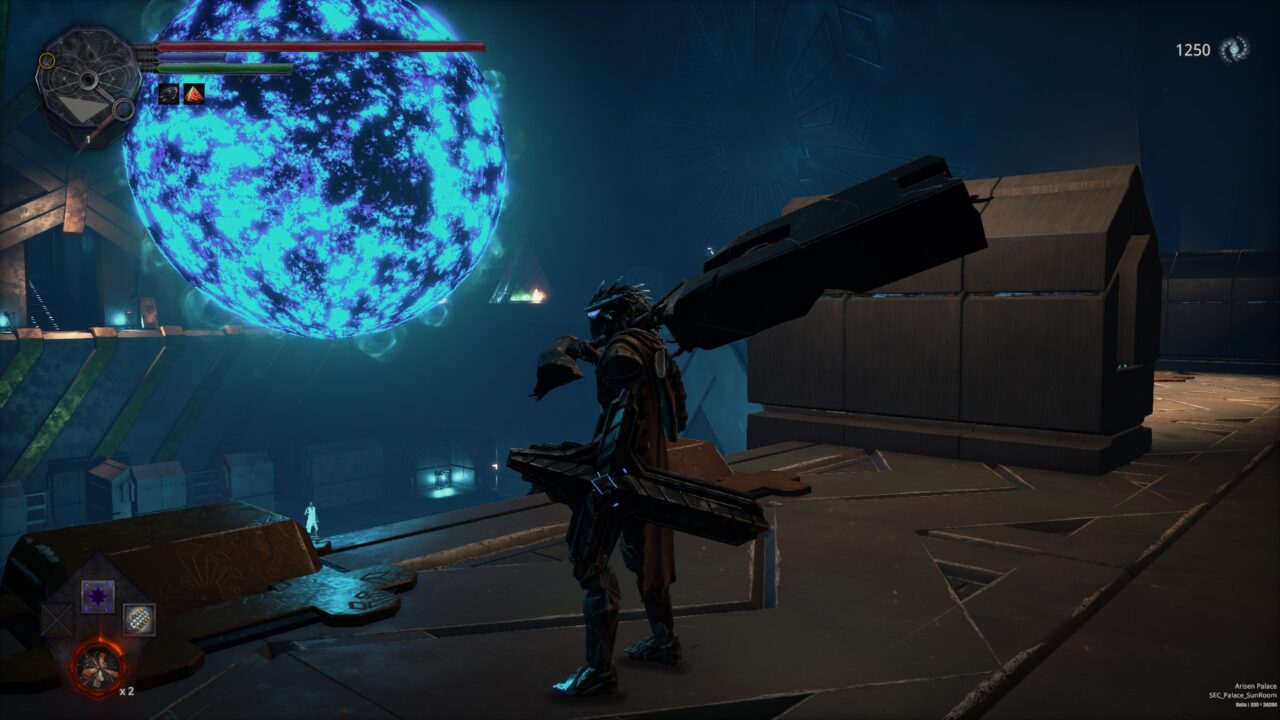
I only feel comfortable harping on a game so much for clear budgetary limitations. What really grinds my gears are the game’s more baffling design choices. Chief among them is the teleport system. Every Souls game since Dark Souls has had unlimited teleportation to any of the game’s checkpoints. Hell, even Demon’s Souls had this. Only Dark Souls had limited teleportation. And they got rid of it for a very good reason. Having to worry about whether or not you can teleport back to a spot is shitty. In Hellpoint, you can only teleport to and from breaches (bonfires) you have synchronized. You synchronize breaches with a special item that is pretty hard to come by. I might have missed a few, but I was only able to synchronize about a third of the breaches. After conquering a zone, the last thing I want to think about is whether or not it’s going to be a bitch to come back here to see if I missed something. I cannot fathom why this decision was made instead of just letting you teleport wherever whenever.
There are also way too many long dark metallic corridors. If you were to ask me to draw a map of how to get from the Firelink Shrine to the Bell Gargoyle fight, I could map out every path, secret nook, crystal lizard, black knight, and enemy ambush from memory. In Hellpoint, far too much of the game is the same few poorly lit textures. It makes it impossible to make a mental map of the station. I could never really figure out how all the different zones actually fit together. This would be somewhat more acceptable if these long corridors were just connecting the different zones, but zones all have their own loading points. You either have long corridors that connect everything or just have tightly designed levels you teleport between. Doing both makes no sense.
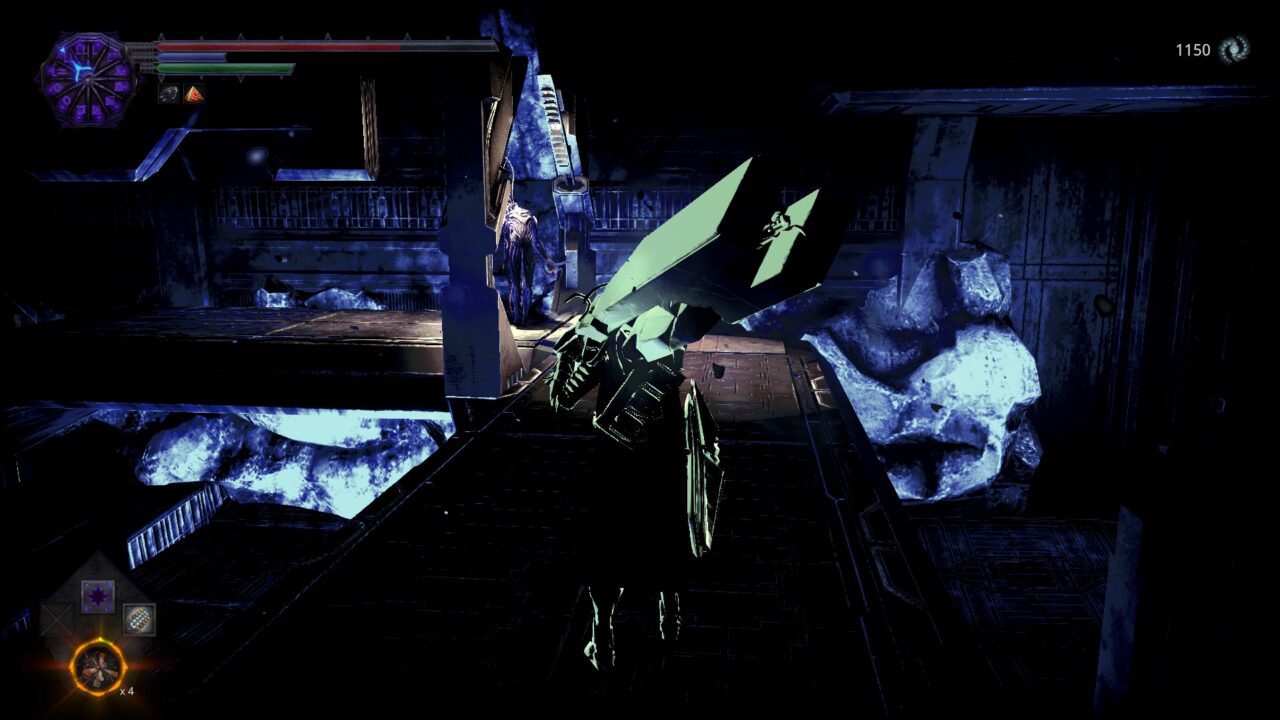
Another massive issue is Hellpoint‘s prime defining feature: the black hole. The station orbits around a black hole in real-time, making a full rotation once an hour. When the black hole is at the two sides of the station, it activates challenge fights that reward you with special loot. When it aligns perfectly with the central iris, this unlocks secret doors (if you’ve put in the right code at a central tower). While this is an interesting concept, I have no idea who thought this would be fun. Soulslike games are about picking your battles and overcoming challenges at your own pace. Having these random time trials in the middle of the game adds absolutely nothing. What’s worse is that there’s no way to speed this up. If you want to access that secret cache at prime alignment, you might just have to sit there for a full hour and wait. If I’m just sitting and waiting in my ARPG as a core feature, you’re doing something wrong.
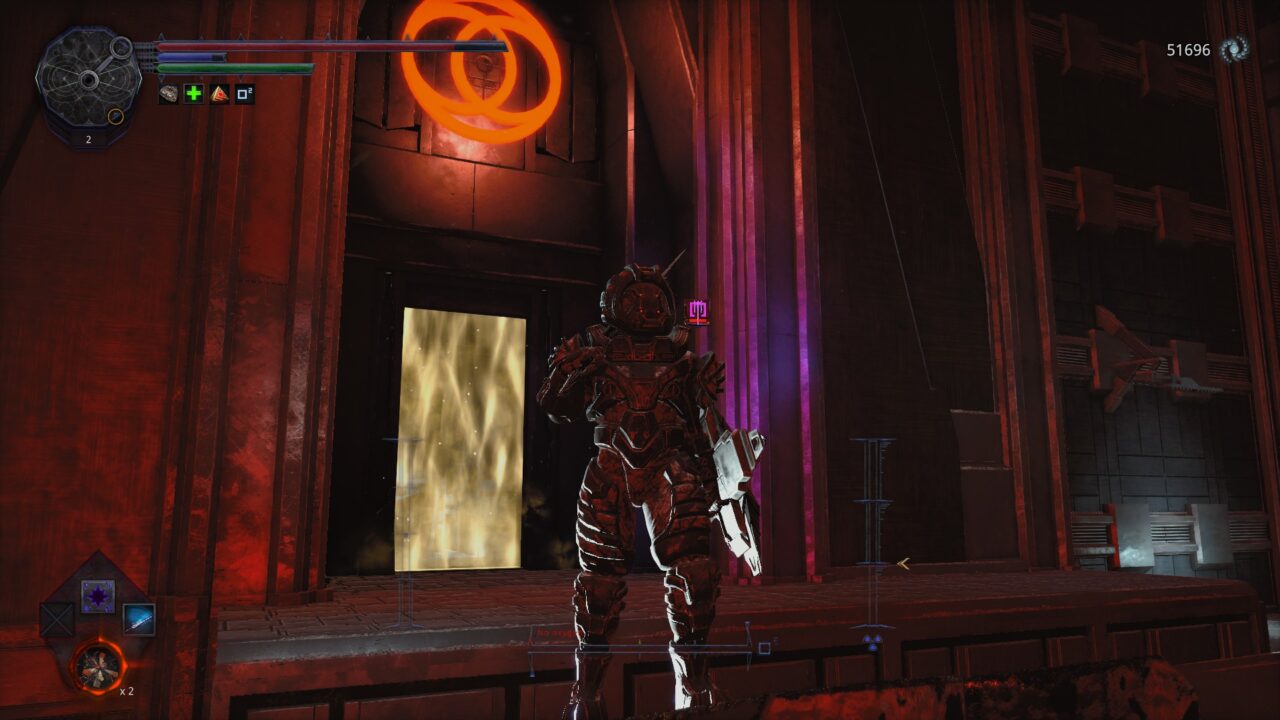
There are countless other small things that all add up to making Hellpoint a confusing mess. Why do I start off at level 1? Soulslike games generally start you off at around level 10 with different builds, allowing you to test out new stuff before you commit yourself to a play style. God forbid you try to go magic in Hellpoint only to discover that you don’t like it, because you’ve wasted at least 3 hours at that point. There is also no reason that each healing item is upgraded independently. Just do it like Dark Souls 2 did and let me upgrade my overall capacity and then assign how much of which to carry at the checkpoints. Speaking of checkpoints, for some reason the bonfires in Hellpoint don’t reset the world state. This can lead to the awkward position where you are full of radiation (decreasing max health) and the only way to fix it is to kill yourself by jumping off of something. Which is it’s own problem, since your lost Axiom drops where you LAND. So you have to kill yourself, but in a place where you can pickup your lost stuff. When I’m running around your game routinely looking for the best spot to kill myself, then I’m not having a good time.
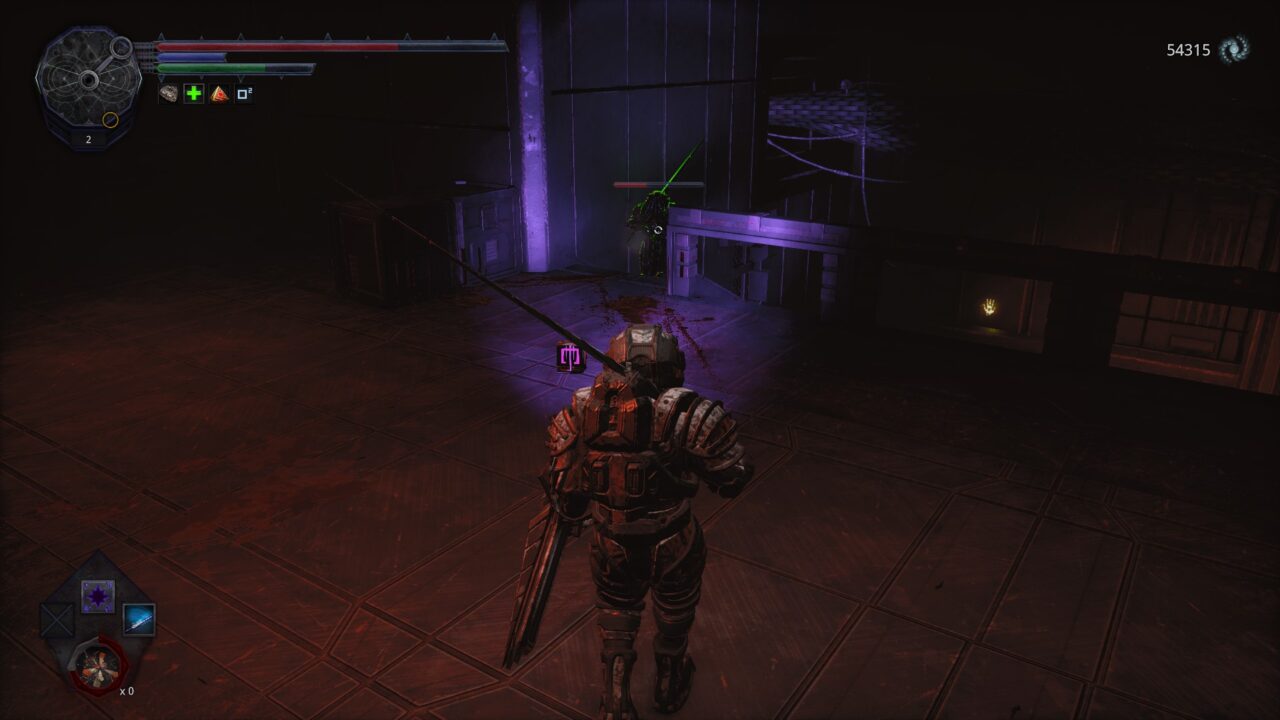
So while Hellpoint succeeds in exploration and setting, the game fails to deliver on the combat that makes this genre so compelling. Throughout the game, enemies only killed me about 20 times. And 15 of those deaths came from when I found a secret key that let me access one of the final zones from the start. What’s more, the confluence of repeated hallways and limited enemy types makes combat feel more like an annoying obligation than a tense duel to the death. It was genuinely fun hunting for secrets. I would easily recommend the game to hardcore fans for that alone. That being said, most of my time playing Hellpoint felt like a slog. The combat needs a serious redesign. Serious Soulslike fans will find too many issues with the game’s plethora of bizarre design choices. Casual gamers will be turned off by the confusing hallways and stiff controls. That being said, I want to see what the team can do with more of a budget. There’s clearly a genuine spark of creativity here that cannot be ignored. This is far from a soulless cash grab. It’s got the souls of the Soulslikes. It just needs a great deal more polish to shine.
Categorized:Horror Gaming Reviews
